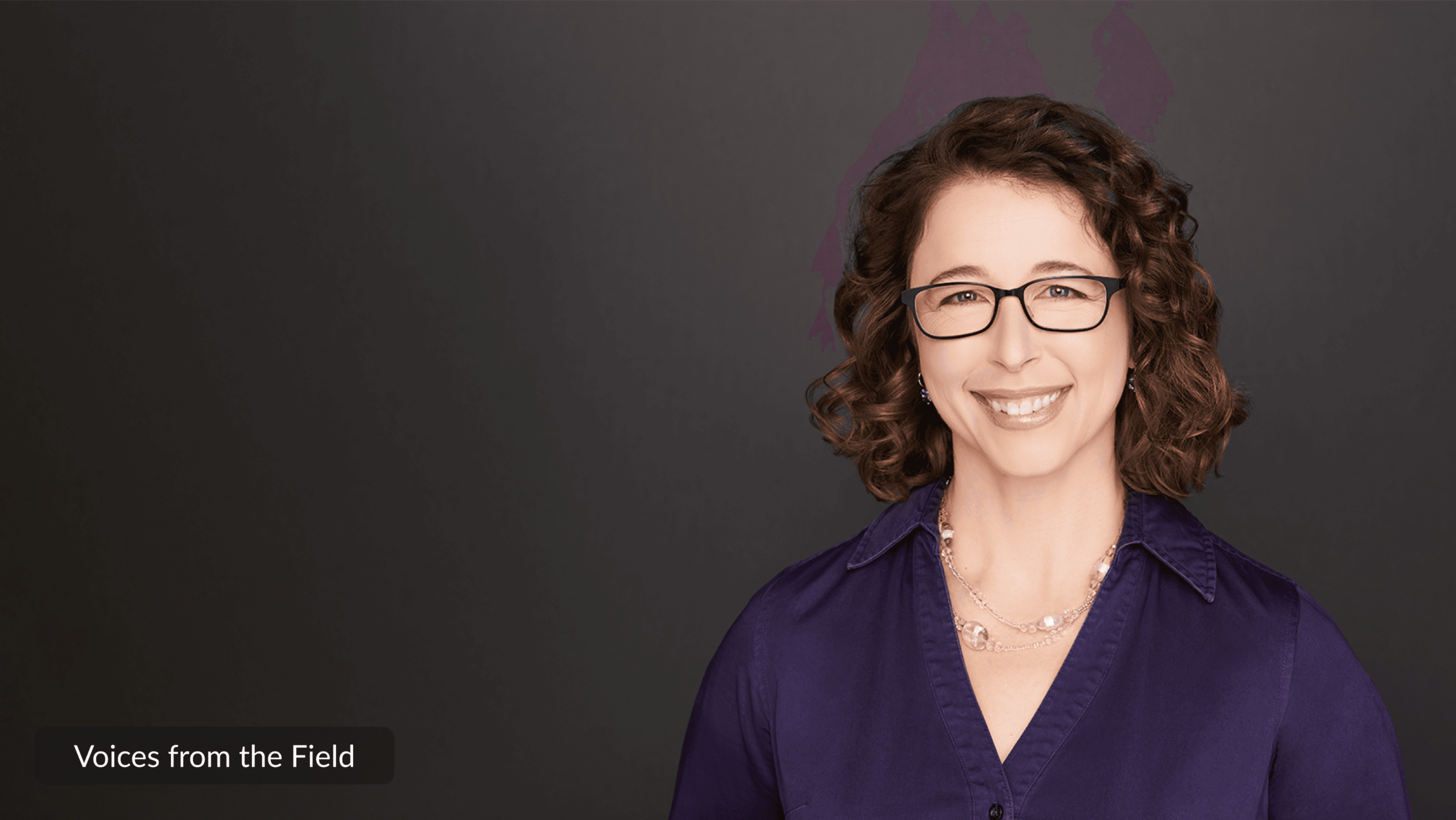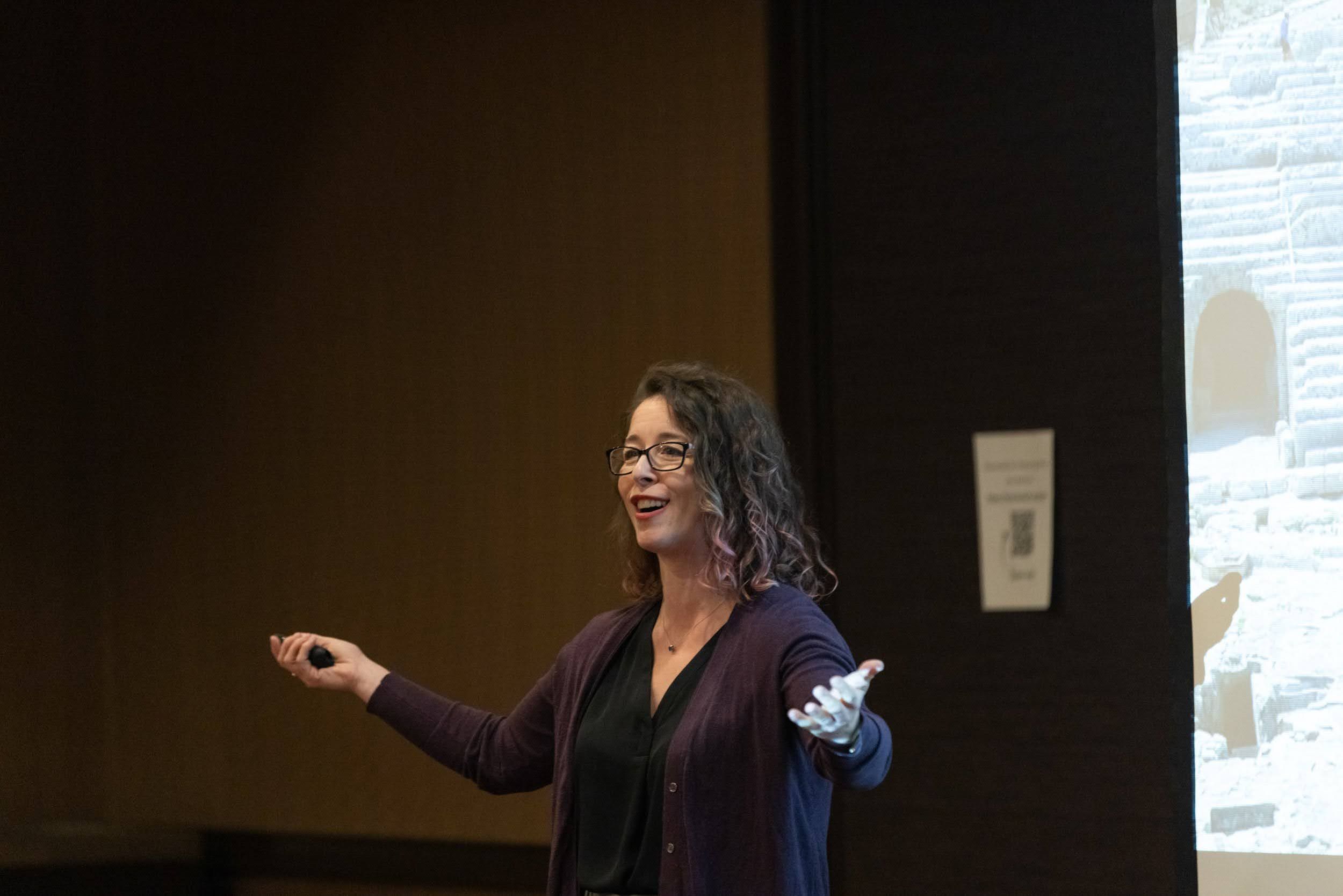Voices from the Field: Thalia Goldstein

What first inspired you to explore the connection between the arts, health, and/or science?
I have loved drama and the performing arts since I was very young, taking acting and dance classes and performing in shows. In college, I double majored in theatre and psychology, and took courses which talked about the application of the creative process and creative thinking to almost any domain of study. After college, I spent a few years auditioning and trying to make it as an actor in New York City, but ultimately I decided to go back and get my PhD. I basically looked for any graduate program across different social science fields that allowed me to study the psychology of imagination and creativity, since those were the topics I loved so much in college and in life.
In my first year of graduate school, I was shocked to discover that there wasn’t a real psychological science of theater, performance, or acting. There had been a considerable amount of theory, practitioners and educators writing about their work, but applying psychological constructs to theater just hadn’t happened yet. That launched me on the path I continue to walk today. The science of acting and theatre, and how we can look to the performing arts for health and wellbeing just became natural areas for my lab group as I moved into faculty positions.
 Dr. Thalia Goldstein giving a lecture
Dr. Thalia Goldstein giving a lectureIn your view, what makes the arts and aesthetic experiences uniquely powerful tools for advancing health and wellbeing—and how does your work contribute to translating that potential into practice?
I think the arts and aesthetics are uniquely powerful for the people who really want to engage in them. I think if sports are your thing that can translate into health and well-being. If what you love is board games, which can be a kind of aesthetic or art then that will put you in community to advance your well-being.
But, what I think arts and aesthetic experiences uniquely provide once you’re involved is that they are a tool or pathway to expression of emotions, connections with others individually, building collaborative community, and helping with a sense of self. All of these are social and emotional skills that are foundational to health and wellbeing. I also think any activity that allows for focused practice, such as making art or deeply reading a script can be healthy. Anything that makes invisible emotions and situations explicit contributes to well-being.
But, with a caveat- if you have no interest in any art form, it’s not going be uniquely powerful for you. So, one of the reasons I am a developmental psychologist is that in childhood there is a universal, natural inclination to engage the arts -- painting, drawing, pretend play, acting, role-play and dance. You don’t need to teach a child to pretend play or make marks on a paper - no matter where they are in the world they’re going to want to do it. The arts are part of a well-rounded and complete life, so introducing artistic experiences and opportunities early allow for children to find what they’re interested in and reap the benefits from those experiences.
What challenges do you see in building a more cohesive and equitable neuroarts ecosystem?
My answer to this six months ago before the funding ecosystem of the United States was utterly destroyed would be very different than the answer I’m going to give now. There is literally no way for the field of neuroarts to continue if the scientific funding landscape in the United States is decimated. Without funding for practitioners through the National Endowment for the Arts and the National Endowment for the Humanities and without funding for scientists through the National Science Foundation and the National Institutes of Health, the ecosystem of researchers, artists, educators, and health care practitioners cannot be equitable. It will simply be the case that people who have enough resources will be able to continue and those who do not will have to abandon their pursuits.
I also agree with Anjan Chatterjee – I don’t think that a more cohesive ecosystem is what we should be aiming for, necessarily. Cohesion makes it sound like we’re all looking for the same answers using the same techniques and have agreed-upon the same methods. That’s not true in any other area of science and I don’t think it should be true here. I think the humanistic and complex aesthetic and personal role that the arts play mean we need individualized methods, and we need to have as large of a view as possible on what constitutes validity, interdisciplinary, and multiple ways of knowing our way forward.
What kinds of support, collaboration, or infrastructure would most help you expand and/or scale your work? What are existing resources that you have found most useful?
Again, as related to my answer on equitable and cohesion, if there is no more funding for scientific pursuits or academics and higher education in the United States, none of the achievements my lab has discovered so far will be able to continue. We have successful theatrical interventions, and exciting discoveries, but need continual resources for students and researchers to be able to continue and expand.
In general, we also need to be able to explore and use what is already here and already known! Over my last 20 years in this field I’ve noticed every few years people “discover” the arts and this “emerging” field of psychological and health benefits. But I started my PhD program in the psychological benefits of theatre in 2005, and was advised by someone who had already been writing and researching the benefits of the arts for decades. There have been empirical studies in a variety of art forms, notably, music and visual arts for many decades at this point, and so to continually have to “rediscover” that music is associated with well-being I think keeps us from pushing the envelope.
Anyone who is thinking about entering into this field, especially if they are someone who has spent their career studying a different kind of scientific construct and now wants to spend their time and attention following their artistic or aesthetic passion, needs to make sure that they are looking to 20-40 years of empirical journal articles in or volumes on the psychology the arts that lay out the major theoretical questions we are still pursuing today. Science is an iterative pursuit, and each iteration needs to pay attention to the scholars before it.
Looking ahead, what is one bold idea or hope that you have for the future of neuroarts?
My answer to the question is always going to be theater. Theater receives significantly less attention, time, funding, and prestige than music and visual arts, and acting is just as common in peoples’ everyday experiences as visual arts and music. Anytime you turn on the television you are watching some form of acting, even if you are watching so-called reality television.
So my bold idea is that anytime there is a discussion about arts education, arts and health, arts and policy, etc, we give equal weight across theater, dance, visual arts, and music. Anytime there are grants that look at science and well-being and the arts, we should not just focus music or visual arts, but that theater is included.
Theater is unique amongst the art forms in that it combines explicit narrative, real live human beings, emotion, and metaphor. The art forms all have elements in common, but each one also has a unique psychological wellbeing story to tell, and I hope that theater continues to be part of the conversation across the lifespan.
